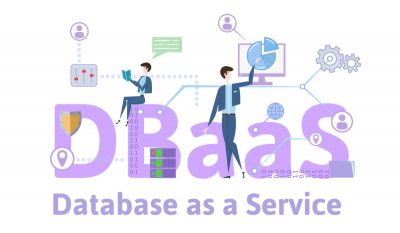Highlights:
- Government rules have begun to impose restrictions on the utilization of customer data. A new data-driven marketing approach should be strongly considered. A solid relationship built on client trust might be the key to a sustainable and effective data strategy.
- This article discusses the four critical components of the new data relationship management strategy (DRM).
Consumer data has seen drastic evolutionary curves during the past decade in this digital marketing era – first, there was the acquisition, then exploitation and subsequently, the regulation. Why regulation? Web cookies and Identifier for Advertisers (IDFA) have permitted a significant rise in ad customization and targeting complexity, but they have also facilitated the occasional violation of privacy.
Government rules have begun to impose restrictions on the utilization of customer data. A novel data-driven marketing approach should be strongly considered. A solid relationship built on client trust might be the key to a sustainable and effective data strategy. Hence, a customer-centric marketing strategy can be the answer to addressing data privacy concerns.
The article discusses four critical components of the new data relationship management strategy (DRM). Companies that master this new data connection and have the people, procedures and technology to deploy it properly may be able to build a sustainable data source for competitive advantage.
The rise and rise of customer data protection
The role of data privacy in marketing has taken a front seat in the contemporary digital marketing context.
Web cookies and Apple’s Identifier for Advertisers (IDFA) tools are the recent advancements that have allowed third parties to exploit personal information. According to a recent study, 33% of Americans think businesses are exploiting their personal data ethically.
By 2021, more than 85% of browser users have had their third-party cookies disabled. These opt-in customizations should be embraced since they will significantly influence digital marketing and because protecting customer data is essential!
Therefore, a whole new approach to client data is likely to be the most crucial element, and so is the privacy-first approach. Marketers must nevertheless continue to expand their first-party database, according to recent report by McKinsey and the Interactive Advertising Bureau. Maintaining and expanding access to client data will revolve around the technical improvements to data-collecting techniques.
Injecting the new DRM approach
Many major companies have already developed a plan to assure adherence to the existing laws and some may even have begun formulating a thorough first-party data bank collation strategy. It helps to understand that the established best practices for data management might not be adequate in the emerging data environment.
Firms should base their data approach on developing a trusting and value-exchanging relationship with consumers – for them to be sustainable and effective. Hence, the DRM Strategy.
The DRM strategy includes four parts: a data invitation, a data security center, a data dialogue and a data value proposition.
Let’s dig deeper into the four components of the DRM strategy.
Four prime components of the DRM approach
- Data invitation
Privacy communications in the modern digital marketing era come in the form of complex notifications. Customers may have little to no idea of what they are consenting to when these messages flash the word “Accept.” Due to the fact that these alerts have evolved as a primary medium of engagement via which customers enter the monitoring zone, businesses will need to assume greater accountability.
A completely permission-based partnership should be able to withstand the present and future legal requirements, as well as answer any concerns from the skeptical set of clients. Building transparency-based trust will probably need a thorough, documented consent procedure as individuals and customer-advocacy organizations are growing more aware of—and are interested in—issues around data protection.
The best practices to be adopted around data invitation include:
- Deploy an omnichannel strategy to guarantee that the data invitation gets sent and seen
- Make the invitation to exchange data with consumers extremely apparent, explicit and tailored
- Write the invitation in lucid language
- Use pre-prompts messaging
Data security center
The second significant component in managing data connections is establishing and developing a data security center to formalize customer-centric marketing. It is essential to communicate openly about existing data protection procedures in order to create consumer confidence and obtain their relevant permissions.
The data security center should have the following:
- A detailed list of the data being gathered and an explanation of their applications
- A preference center allowing customers to opt out of future data gathering and usage
- Content that is regularly updated on data governance and safety
Currently, large digital platforms are establishing these types of data security centers!
A few organizations understood that to future-proof their data strategy in light of new privacy rules and Apple’s IDFA opt-in method; they would need to acquire consumer data directly. Therefore, the firm undertook the initiative to increase client connections via internet touchpoints. To handle consent and maintain regulatory compliance, it utilized a customer data platform (CDP) that made opting out of marketing communications a breeze for clients. Its data-strategy revamp also called for targeted campaigns and promotions, including email-marketing activities that would not have been feasible without the company’s first-party data, to develop one-on-one consumer interactions.
- Data dialogue
Data relationship management also seeks constant communication. In addition to transparency, consistent engagement indicates that the firms always aim to improve data security best practices and use consumer data to enhance their entire product experience.
Although many consumers may not be interested in a continuous data discussion, many may be reassured by the openness and a company’s declared dedication to the safety of their data. Customers have the “right to be forgotten” under regulations such as the GDPR. Anticipating consumer concerns and giving complete information on data usage will assist in guaranteeing that they do not exercise this right!
- Data value proposition
A data relationship with a clearly defined value proposition can help keep consumers engaged. Customers would share data for anything of value! A corporation with a clear, compelling value proposition could persuade a more significant majority to disclose their data.
Actual value generation will need extra strategic consideration or the establishment of new data-sharing benefits. It is against CCPA standards to exclude consumers directly from discounts or services because they have opted out of data gathering; consequently, customer value must be based on the benefits a firm may receive from the data.
Offers and discounts are a possible method for firms to exchange value with customers. Enhancing the customer experience is another method for developing a compelling value proposition. Data may enhance the customer experience by enabling consumers to locate what they want more quickly and pointing them to new products and services that are most likely to interest them.
Customers may be eager to contribute information for a customized experience. However, the above-mentioned customer-centric marketing strategy should be implemented to ensure the confidentiality of the shared data.
Conclusion
Numerous businesses are prioritizing the technological aspects of data management in response to the ever-evolving world of legislations concerning client data. Companies are striving to establish a transparent, permission-based connection with their customers using a customer-centric marketing strategy – with a compelling value offer!













